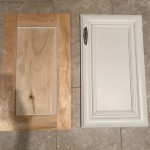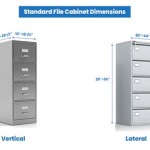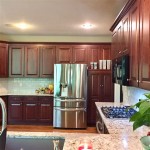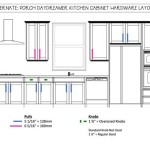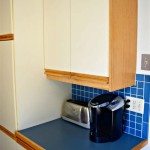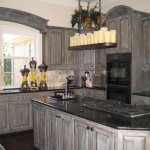Adding Life To Your Living Room With A TV Cabinet Design
The living room serves as a central area in most homes, acting as a space for relaxation, entertainment, and social interaction. As the focal point of many living rooms, the television often dictates the layout and design. A carefully chosen TV cabinet can significantly impact the overall aesthetic and functionality of the space. Beyond simply housing the television, a well-designed cabinet can enhance the room's décor, provide storage solutions, and contribute to a cohesive and inviting atmosphere.
Selecting the appropriate TV cabinet requires consideration of several factors, including the size of the television, the available space, the desired style, and the storage needs. A poorly chosen cabinet can overwhelm the room or fail to adequately accommodate the necessary components, leading to a cluttered and disorganized living space. Conversely, a thoughtfully selected cabinet can elevate the room's design, improve organization, and make the living room a more enjoyable and functional area.
Understanding the Importance of Dimension and Scale
Accurate measurement is crucial when selecting a TV cabinet. The cabinet's width should be sufficient to comfortably accommodate the television screen, with some extra space on either side for aesthetic balance. The height of the cabinet is also important; the ideal viewing height places the center of the television screen at eye level when seated. Failing to consider these dimensions can result in an uncomfortable viewing experience and a visually unbalanced room.
Beyond the television itself, the cabinet should also accommodate other media components, such as game consoles, DVD players, streaming devices, and speakers. Allocating sufficient space for these items prevents clutter and ensures easy access to the necessary connections. Measuring the dimensions of these components before selecting a cabinet is highly recommended.
The overall scale of the cabinet in relation to the living room is another key consideration. A large, imposing cabinet might overwhelm a small room, making it feel cramped and claustrophobic. Conversely, a small, understated cabinet might get lost in a larger room, failing to make a significant visual impact. Selecting a cabinet with proportions that complement the size of the room is essential for creating a harmonious and balanced aesthetic.
Considering future needs can also be beneficial. It is possible the television might be upgraded to a larger model in the future. Therefore, selecting a cabinet with some extra room for growth can avoid the need for a replacement cabinet when the television is upgraded.
Exploring Different Styles and Materials
TV cabinets are available in a wide range of styles, from modern and minimalist to traditional and ornate. The chosen style should complement the existing décor of the living room and reflect the personal taste of the homeowner. A cohesive style throughout the room creates a more visually appealing and harmonious environment.
Modern TV cabinets often feature clean lines, simple shapes, and neutral colors. They may incorporate materials such as glass, metal, and laminate. Minimalist designs emphasize functionality and understated elegance, often with hidden storage compartments to keep the living room clutter-free.
Traditional TV cabinets tend to be more ornate, with decorative details, carved moldings, and rich wood finishes. Common materials include solid wood, veneer, and antique-inspired hardware. Traditional designs often evoke a sense of warmth, sophistication, and timeless appeal.
Rustic TV cabinets showcase natural materials, such as reclaimed wood, stone, and metal. These cabinets often feature distressed finishes and rugged textures, adding a touch of character and charm to the living room. Rustic designs are well-suited for creating a cozy and inviting atmosphere.
The choice of materials also influences the overall appearance and durability of the TV cabinet. Solid wood is a popular choice for its strength, beauty, and longevity. Veneer offers a more affordable alternative, providing the look of solid wood at a lower cost. Laminate is a durable and easy-to-clean material that is available in a wide range of colors and patterns. Metal and glass can add a contemporary touch to the design.
Optimizing Storage and Functionality
Beyond aesthetics, a well-designed TV cabinet should provide ample storage for media components, accessories, and other items. Storage solutions can help to keep the living room organized and clutter-free, creating a more relaxing and inviting space. The specific storage needs will vary depending on the homeowner's lifestyle and preferences.
Cabinets with shelves are ideal for storing media players, game consoles, and books. Adjustable shelves provide added flexibility, allowing for customization to accommodate items of different sizes. Drawers are useful for storing smaller items, such as remote controls, cables, and accessories. Doors can conceal clutter and create a more streamlined appearance.
Some TV cabinets also incorporate features such as cable management systems, which help to keep cords and wires organized and out of sight. Integrated lighting can add ambiance and highlight decorative items. Swivel bases allow the television to be easily rotated for optimal viewing from different angles.
Consider the accessibility of storage spaces. Frequently used items should be stored within easy reach, while less frequently used items can be stored in less accessible areas. The arrangement of storage compartments should be logical and intuitive, making it easy to find and retrieve items when needed.
The back of the TV cabinet should provide adequate ventilation to prevent overheating of electronic components. Ventilation holes or open backs allow for proper airflow, extending the lifespan of the devices and preventing potential safety hazards.
The location of electrical outlets should also be considered when selecting a TV cabinet. The cabinet should be positioned near an outlet to avoid the need for unsightly extension cords. If necessary, additional outlets can be installed to accommodate all of the necessary electronic devices.
Ultimately, adding life to a living room with a TV cabinet design involves a careful balance of aesthetics, functionality, and personal preferences. By considering the dimensions, style, materials, and storage needs, a homeowner can select a cabinet that not only enhances the look of the room, but also improves its functionality and creates a more enjoyable living space. The investment in a well-chosen TV cabinet can significantly improve the overall quality of life in the home.

40 Ideas For Decorating Around The Tv A House Full Of Sunshine

40 Ideas For Decorating Around The Tv A House Full Of Sunshine

150 Modern Tv Unit Designs 2025 Top 8 Stand Wall Design Ideas For 2024

19 Stylish Ideas For Decorating Around A Tv Set

35 Tv Wall Ideas For A Chic Functional Entertainment Hub

200 Top Modern Tv Unit Design Ideas For Living Rooms 2025 Cabinet Wall Decorating P3

19 Stylish Ideas For Decorating Around A Tv Set

40 Modern Tv Unit Design For Ultimate Entertainment At Your Space Centuryply

Built In Entertainment Center Rogue Engineer

200 Modern Living Room Tv Cabinet Design Ideas 2024 Unit Home Interior Wall Decorating
Related Posts

